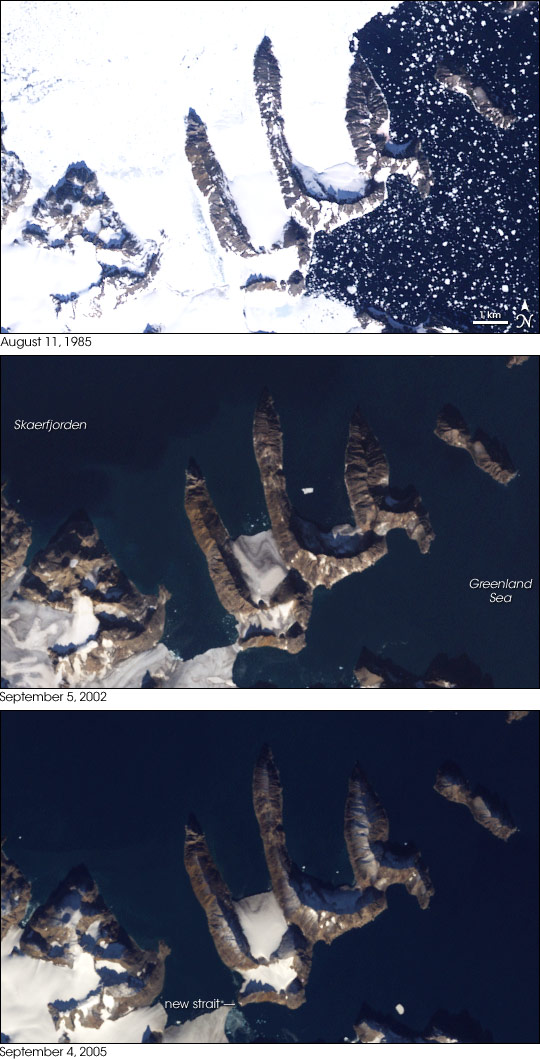We have discussed how the Greenland glacier is kilometers thick, providing a scaffolding to stroll high above the island's mountains and deep valleys rather than up and down them (I guess this is a form of both walking on water and walking on air!). We have also discussed how rising oceans allow you the luxury of paddling over the mountains and deep canyons of continental shelves, again sparing you from trudging along the landscape.
These submerged mountain-scapes are very real, but are just hidden from plain view and rarely factor into our representations of the Earth. If one takes the effort to visualize these landscapes however, it opens up a whole new world of exploration and aesthetic awe. Having already gone below the ocean level however, is it possible to go even further down? Can we explore the landscape below the surface level? In order to answer this, we first need a little basic knowledge of the Earth’s composition.
One generally assumes that the Earth’s oceans collectively make up the largest fluid body on our planet. After all 75% of the Earth’s surface is covered by oceans! The key word to the previous oft-quoted statistic however is “surface”. If you scratch beyond the surface however, a much, much larger fluid body can be found.
Below the Earth’s surface is a hot semi-solid layer that can flow and behave like a fluid. This layer, called the mantle, is roughly 2,900 km thick, and it is clearly this body that is the largest fluid body of the Earth. There are places on the Earth where this hot fluid mantle is visible (Iceland and Hawaii being two prime examples), but unlike the ocean, this fluid body is pretty much fully obscured by the Earth’s oceanic and continental crusts that float on top of it, which on average are just 5km and 30km thick respectively..
So if the visual world as we know it, rocks, oceans and all, is just floating on fluid mantle, then what is going on under the surface? Well, as it turns out, not that different from what is underneath the tip of the iceberg.
Mountains, just like icebergs have the majority of their mass under the surface. Ice generally has a submerged to exposed ratio of 9:1. Because mountains are floating on a material that is a lot more viscous and dense than sea water, the ratio isn’t quite as high, but it is still a substantial 6:1 ratio. In geologic parlance, the part of mountain that is under the surface of the Earth is called its root, and this root has roughly 6x the mass of what is exposed above the surface! Therefore if you think that the Himalayas are huge, then just picture what the submerged part in the mantle looks like below the surface. While Mt. Everest juts 8.9 km into the atmosphere, the crust under the Himalayas extends down 70 km into the mantle, 40 km more than the average!
Here is a text book illustration of the root of a generic mountain:
Specialty map stores sell raised 3D relief maps, where you can close your eyes and slowly slide your finger over the Earth to feel the mountains and abysses to scale. If you were to flip one of these maps upside down however and again slide your finger over it, your senses would feel a completely incorrect representation of reality. All you would feel would be the inverse of the surface topography (which actually…. come to think of it, though totally pointless, could be somewhat cool and aesthetically interesting). For a relief map to be accurate however, instead of its underside just being a negative of the top, it would need to be an amplification of it: higher mountains, lower valleys.
Clearly some of the iceberg pictures above have been photoshoped for dramatic effect, but doesn’t it make you wonder if the features of the submerged Himalayas are not just as surreal and dramatic? There is presumably less weathering effects in the mantle than in the atmosphere, but what if there are canyons with flowing magma, inverse waterfalls, caverns, rock faces, or other features that are beyond our imagination.
Of course we are probably never going to get an accurate 3D relief map of mountain roots in the mantle. There is no way to photograph these features nor bounce lasers from satellites onto them. And while the mantle might be fluid-like, there is not going to be any submarines travelling through those environs. Nor would Jules Verne's tunnels in a "Journey to the center of the Earth" be of much use.
The best way to get a representation of the Earth under the crust is by using the refraction of sonar waves caused by earthquakes. Geophysicists have a pretty good understanding of the speed with which these earthquake sonar waves travel through different materials. By using thousands of listening points across the world, geophysicists can then use the amount of time delay it takes for a sonar event to reach a particular listening point to determine what kind of rocks and material it traveled through. Nonetheless, while these techniques are constantly being perfected, it is highly unlikely we will ever be place naming the equivalent of Yosemite's Half Dome, Everest's North Face, or Death Valley under the mantle. Doesn't hurt to dream though....







